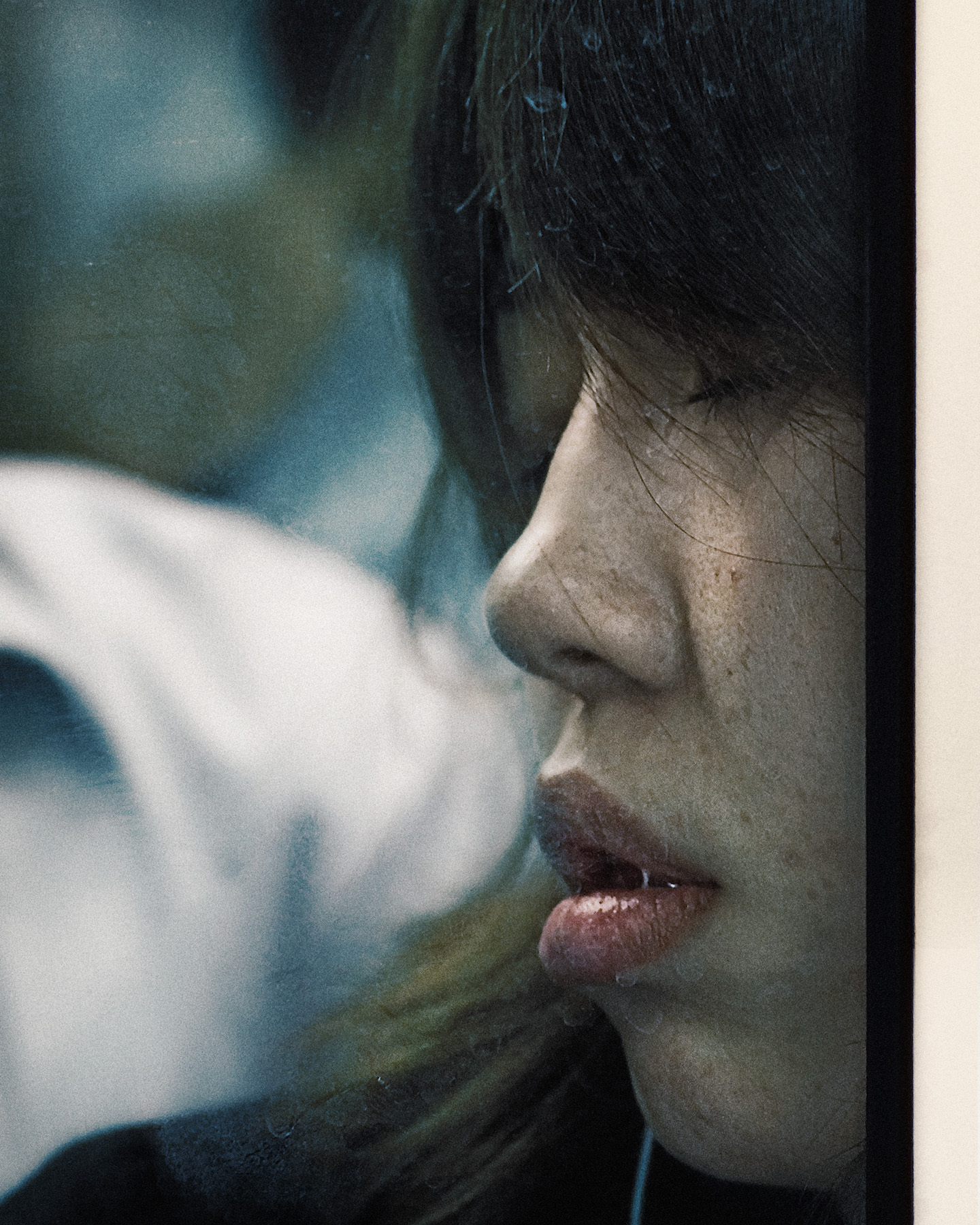The torture of Tokyo rush hour, up close and impersonal
- Text by Cian Traynor
- Photography by Michael Wolf

The Odakyu Odawara Line carries one-and-a-half million people across Tokyo every single day.
It starts in the suburbs southwest of the city and stretches 82.5 kilometres to Shinjuku, the planet’s busiest train station, which holds a Guinness World Record for the average number of daily passengers: 3.64 million.


Photographer Michael Wolf first discovered the sheer scale of that phenomenon in 1995, when he reported on the sarin gas attacks across the city’s subway system for Stern magazine, and had an inkling that it was worth exploring.
“I took six photographs which, in the end, never made it into the story but I filed them away for future reference,” he says.
“In 2010, I had some time on my hands, took out the sheet with those six images and decided to revisit the station to see if I could make a project out of it.”


All the photos in Tokyo Compression were shot at one train station along the Odakyu line and, since it had just one track, Michael easily found a prime position.
As commuters only exited from one side, he could line up his camera 100 centimetres away from the window – undisturbed – as trains arrived from either direction.
Each time, the claustrophobic scenes remained in near-silence. There were no signs of aggression. But the windows would be perpetually covered in condensation, blurring the mass of bodies crammed within.

“I like the lady looking directly at me with one eye. It works on several levels: she is looking at me with one eye; I am looking at her with one eye, i.e. my camera lens.” – Michael Wolf.
“It was always during rush hour in the morning from 7.30 until about 8.45. Every 30 seconds, a train would roll in, I would take my pictures and at 8.45 I would go back to the hotel.”
He did that once a year, for 30 days at a time, over a period of four years. When going through the images, trying to figure out a way to frame the work, he decided to zoom in even closer.
Every shot had an average of four or five faces pressing against the glass, so Michael decided to make it even more intense by focusing on one person.


“I was interested in creating a visual metaphor,” he says. “The negative effect that life in mega cities has on its inhabitants.”
Michael was born in Germany and now lives in Hong Kong. His parents gave him a camera at the age of 13 and he quickly fell in love with the process of editing in the darkroom.
One day, a friend of his father’s came to visit and complimented his work, suggesting he apply to study photography at the Folkwang School in Essen, Germany, with the renowned photographer Otto Steinert, who was a professor there. And so he did, kickstarting a remarkable journey in photography.


In the decades since, Michael’s work has been exhibited around the world and he has won first prize in the World Press Photo of the Year competition twice.
The only constants, the 63-year-old says, are the need to follow his instinct and the challenge of not getting enough sleep.
When it comes to advice for young photographers just starting out, he prefers to keep things as direct and understated as his imagery: “Inform yourself, work hard, be obsessive.”

Tokyo Compression Final Cut will be launched on 20 April at the opening night of its exhibition at Blue Lotus Gallery, Hong Kong.
New works from this series will also be on exhibition at London’s Flowers Gallery, E2 from 26 May – 1 July.
Enjoyed this article? Like Huck on Facebook or follow us on Twitter.
Latest on Huck

In the ’60s and ’70s, Greenwich Village was the musical heart of New York
Talkin’ Greenwich Village — Author David Browne’s new book takes readers into the neighbourhood’s creative heyday, where a generation of artists and poets including Bob Dylan, Billie Holliday and Dave Van Ronk cut their teeth.
Written by: Cyna Mirzai

How Labour Activism changed the landscape of post-war USA
American Job — A new exhibition revisits over 70 years of working class solidarity and struggle, its radical legacy, and the central role of photography throughout.
Written by: Miss Rosen

Analogue Appreciation: Emma-Jean Thackray
Weirdo — In an ever more digital, online world, we ask our favourite artists about their most cherished pieces of physical culture. Today, multi-instrumentalist and Brownswood affiliate Emma-Jean Thackray.
Written by: Emma-Jean Thackray

Meet the shop cats of Hong Kong’s Sheung Wan district
Feline good — Traditionally adopted to keep away rats from expensive produce, the feline guardians have become part of the central neighbourhood’s fabric. Erica’s online series captures the local celebrities.
Written by: Isaac Muk

How trans rights activism and sex workers’ solidarity emerged in the ’70s and ’80s
Shoulder to Shoulder — In this extract from writer Jake Hall’s new book, which deep dives into the history of queer activism and coalition, they explore how anti-TERF and anti-SWERF campaigning developed from the same cloth.
Written by: Jake Hall

A behind the scenes look at the atomic wedgie community
Stretched out — Benjamin Fredrickson’s new project and photobook ‘Wedgies’ queers a time-old bullying act by exploring its erotic, extreme potential.
Written by: Isaac Muk